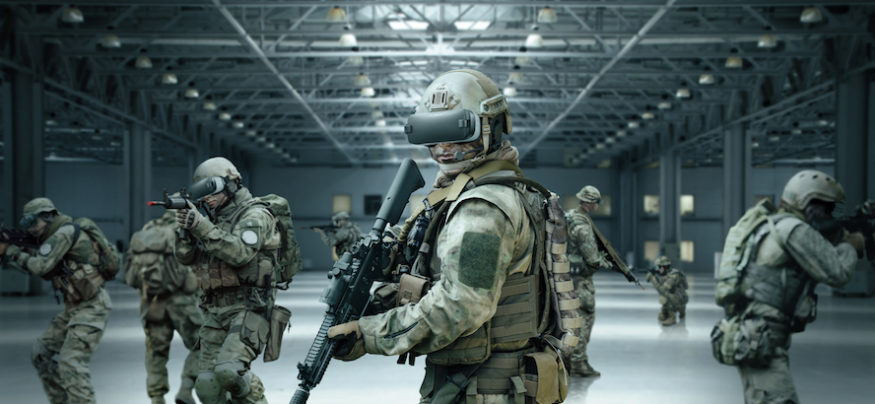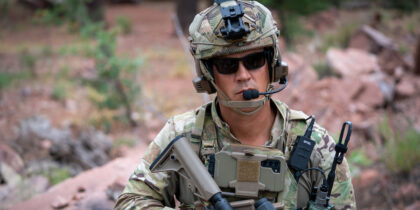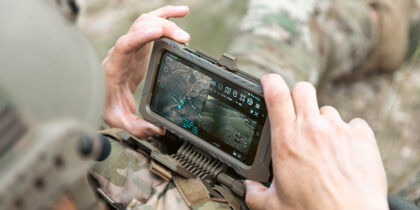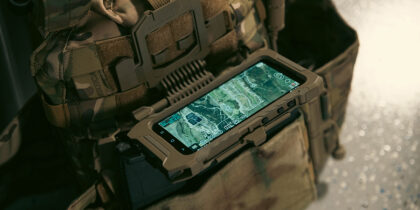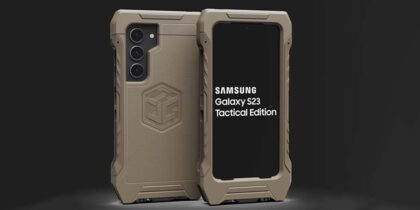Among the hot topics of our recent Federal Innovation Summit were virtual (VR), augmented (AR) and mixed-reality (MR) and their potential to transform training and federal agency operations. Samsung is already making mobile immersive solutions a reality for the Department of Defense (DoD) and is partnering with leading content providers for interactive content that spans weapons systems, combat operations, military health and maintenance training. Booz Allen Hamilton is one of these strategic partners, and we’re working hand-in-hand to deliver innovative, immersive solutions.
To dive deeper into some of the government sector’s most pressing immersive challenges and opportunities, I spoke with Young Bang and Munjeet Singh, both leaders of Booz Allen’s Immersive Experience team, which integrates data science and machine intelligence to improve immersive experiences.
Q: Booz Allen talks quite a bit about a human-centered approach to VR and AR. Can you explain more what that means and how you execute on that vision?
Munjeet Singh, Booz Allen vice president: Decisions will change significantly and disrupt how defense and civilian agencies train their personnel and staff — from the battlefield to the operating table. For us, immersive means the presentation of artificial environments that replicate the real world including sight, touch or even smell. These solutions are delivered through a dynamic mix of virtual reality, augmented reality, mixed reality and enhanced input devices such as Samsung Gear VR. The definition of mobility changes when we talk about immersive technologies, and it’s not just about gaming. We see mobile as an ideal platform for delivering training to the market in a cost-effective and powerful way. The more we can mimic a real-life combat zone, operating table or other environment, the more prepared users will be for whatever stressful scenarios come their way.
Q: The DoD is facing numerous challenges — from keeping pace with changing mission needs to addressing the skills gap and delivering measurable impact in today’s high-stakes environments. Where are we today and what do you see for the future of immersive training?
Young Bang, Booz Allen senior vice president: Machine intelligence (MI), which we define to include artificial intelligence or AI, deep learning, quantum and other advanced techniques, is transforming industries and applications and is rapidly transitioning from buzzword to reality — especially regarding immersive training. Our training content is integrated with data science and machine intelligence so that systems are learning to improve user experiences and outcomes. Enhanced by machine intelligence, immersive training can replicate human learning and problem solving by anticipating what the user wants and creating realism with higher fidelity. We see this already happening in pockets today, but there are advancements on the horizon that will continue to shape the real-time and reactive nature of immersive simulations.
Digitize Your Government Agency
Get your free guide to digital transformation for government agencies. Download Now
As we mentioned at the Federal Innovation Summit, we want to build realistic training situations that can deliver curve balls to users so they can learn how to react in dynamic, real-time environments. The goal of integrating machine learning is to remove cognitive load so personnel can focus more on their mission. We see this as the future of immersive training, along with increasingly untethered solutions that make all of this more mobile so training can happen anytime, anywhere.
Q: Content obviously needs to be realistic to be effective. What lessons can the industry learn from the gaming world and how have you applied that to your VR content development?
Munjeet Singh: We’ve focused on hiring the best and the brightest from the gaming and user experience industries, including individuals with no experience in government contracting. Our developers come from companies like Nintendo, Disney Digital Studio Services and others in the gaming field because they know how to create engaging training materials and a seamless user experience. Whether you’re creating a module for a soldier undergoing gunship training or digitally mapping the ocean floor for more accurate planning, it’s critical that you have convincing content and visuals. The gaming industry has established a good working model for content development and creation that we can continue to build upon.
Q: Samsung and Booz Allen have collaborated on numerous exciting deployments, demos and use cases for the DoD over the past years. What is one example of an exciting project that you have recently brought to market?
Young Bang: We recently worked together with Samsung on creating a Tabletop Commander wargaming scenario using a Samsung HMD Odyssey headset. The Tabletop Commander experience condenses 50 to 100 pages of operation orders into an immersive environment. The solution leverages natural language processing and algorithms to allow users to simulate battalion and equipment movement and how opposing forces will react — all without putting a soldier in harm’s way. More impressive, the prototype was executed quickly in three weeks together with Samsung. This is just one of many examples of how VR technologies can truly help improve readiness and potentially save lives.
Learn more about how immersive training solutions are helping agencies hone mission-critical skills safely and cost-effectively.
